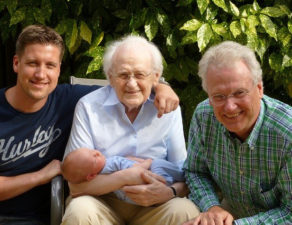Estate planning documents need to be regularly reviewed. I often tell clients to review their estate plan every three to five years or upon the occurrence of a significant life event such as a birth, marriage, divorce or death. Documents should also be reviewed for changes in the law. One of the benefits to connecting with us, whether you are a client or not, is that you can receive our monthly newsletter, thus, increasing your awareness of any significant changes in the law. But sometimes, the most important reason to review your documents is simply to confirm the viability of the planning you have done. I find this to be very true in the case of revocable living trusts.
One of the most misunderstood estate planning documents is the revocable living trust. I meet with many clients who have created revocable living trusts and were under the impression that their affairs were in order, but unbeknownst to them, they were merely delivered a cookie-cutter document that avoids probate but in doing so, may or may not meet their goals and objectives, or worse, complicate their estate plan. If you have a revocable living trust, you may be one of those individuals.
I see many revocable living trusts with overly complicated archaic language that is irrelevant to the estate and complicates matters. For instance, when the federal and New York State estate tax exemptions were much lower, there was good reason to draft documents with language that saved estate taxes. This usually involved setting up special types of trusts upon the death of the first spouse. Now that the exemptions are at levels that practically eliminate the estate tax for many, these trusts are no longer needed. However, many cookie-cutter revocable living trusts still have this outdated planning that mandates a trust for your spouse after your death creating administrative complexities and nightmares for your heirs.
I also see many revocable living trusts that do not contemplate asset protection planning to cover the cost of long-term care. A common planning technique used to obtain Medicaid eligibility for a spouse is call “spousal refusal”. This is where the assets of the ill spouse are transferred to the well spouse, who then refuses to use those assets for the ill’s spouse’s care. The majority of cookie-cutter revocable living trusts make this planning impossible because the assets of the trust are usually owned jointly, there are no provisions for the movement of assets from one spouse to the other and in the case of incapacity, the trust does not sufficiently allow for the termination of the trust or any other movement of assets out of the ill spouse’s name. This can cost you a lot of money if you get sick someday.
When planning for spouses, it is often necessary to consider creating a special needs trust for a disabled spouse upon the death of the first spouse. Current law does not allow you to create a special needs trust for a spouse when the underlying document is a revocable living trust and many people do not know this.
Finally, if you are someone who thought you were doing Medicaid planning by drafting a revocable living trust, it is important to remember that a revocable living trust does not protect your assets from the cost of long-term care. For that, you need to consider an irrevocable Medicaid Trust.
As you can see, there is good reason to review your estate planning documents on a regular basis, especially your revocable living trust, to avoid being subjected to the consequences of a cookie-cutter documents. Stop by our office in Rye or Yorktown Heights, NY or call us at (914) 925-1010 or (914) 245-2440 for a consultation and find out the ways that I can help you and your loved ones in drafting an effective revocable living trust.
We also serve Putnam County, Westchester County, Carmel, NY, Harrison, Larchmont, Mamaroneck and many more locations throughout New York State.









